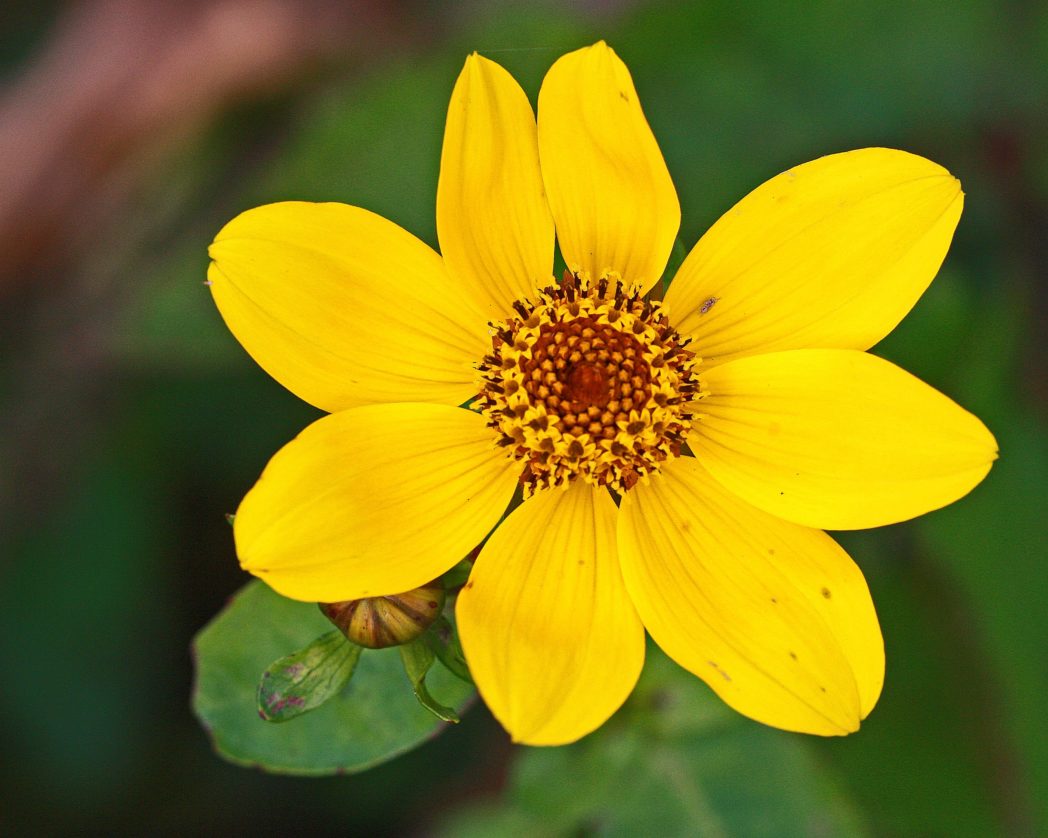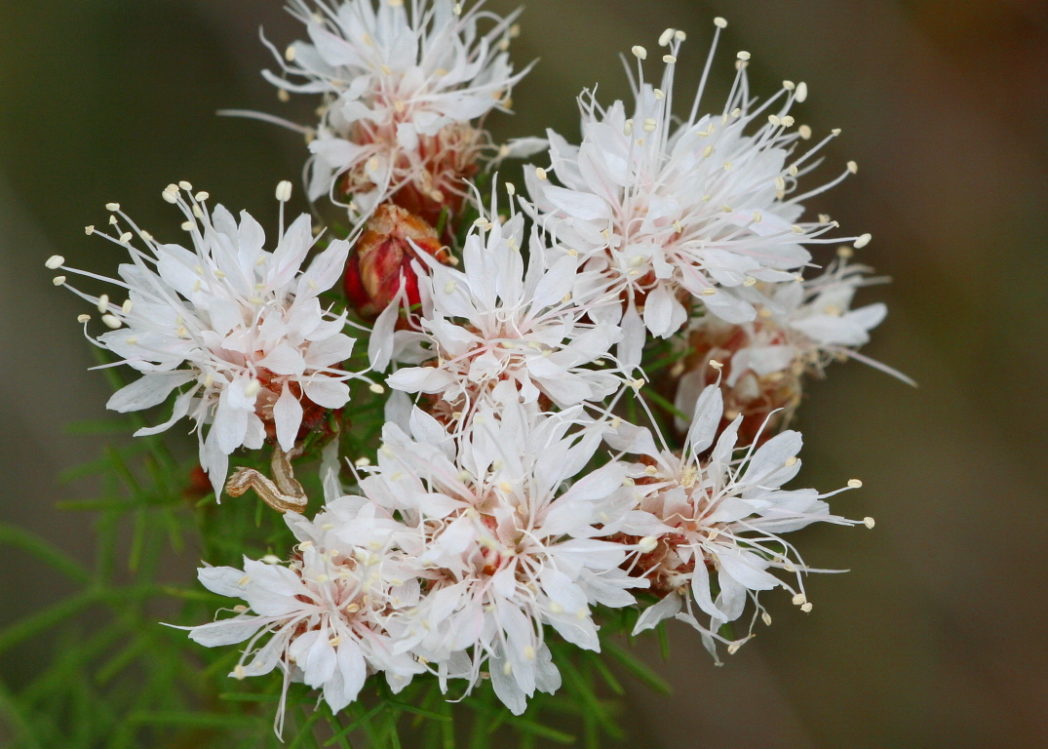Bloom report: Head south for the best fall wildflower viewing
Pictured above: Summer farewell (Dalea pinnata) by Mary Keim
Unfortunately, fall wildflower viewing may not be great in the northern half of Florida. Because much of the state experienced a prolonged hot, dry spell in September, the best show is expected to be in south Central Florida and southward, which received more rain.
Yellow and purple wildflowers in the aster family (Asteraceae) seem to dominate Florida’s fall flora. Less noticed but often quite common are native wildflowers with white to off-white flowers, including:
- Thoroughworts (Eupatorium spp.) — 18 species, all of which are native, with six of them occurring statewide. Dogfennel (E. capillifolium) is one of the best known members of this species. It is very aggressive and often considered a weed. Another species, Semaphore thoroughwort (E. mikanoides), is endemic, occurring only from the central panhandle coast to most of peninsular Florida.
- Cottonweed (Froelichia floridana) — statewide
- Feay’s palafox (Palafoxia feayi) — north central peninsula and south
- Fragrant ladiestresses (Spiranthes odorarta) — South Florida
- Hammock snakeroot (Ageratina jucunda) — eastern Panhandle to peninsula
- Rabbit tobacco (Pseudognaphalium obtusifolium) — statewide
- Rush featherling (Pleea tenuifolia) — central and west Panhandle
- Summer farewell (Dalea pinnata) — Panhandle to south central peninsula (pictured above)
- Wild buckwheat (Eriogonum tomentosum) — Panhandle to south central peninsula

Regional predictions
Bob Farley, FDOT District 3 Vegetation Project Manager, noted that in the Panhandle “so far I have visited sites of [Sessileleaf pinelandcress] Warea sessilifolia and [Smoky balm] Dicerandra fumella in Calhoun and Walton counties respectively that have been known significant populations in the past [acres], but are showing almost nothing this season. Wet ditches seem to be faring better.”
Claudia Larsen, owner of Micanopy Wildflowers, was a bit more optimistic about fall wildflower viewing in north Central Florida. While she concurred that late summer dryness could affect showiness of fall wildflowers, Claudia pointed out that “Payne’s Prairie on U.S. Highway 441 south of Gainesville usually has a great show of yellow Burr marigold (Bidens laevis) [pictured above] on the floating islands in fall.” And the sandy trails of Morningside Nature Center (Gainesville) are her favorites for viewing upland wildflowers like Summer farewell (Dalea pinnata) and yellow and purple wildflowers in the aster family.
Much of Central Florida received some rain from Hurricane Dorian. Otherwise, all except the southerly portions have been “…very dry and hot (almost no rain) since Dorian as my restoration plantings can attest” noted Wendy Poag, naturalist/land steward with Lake County Parks & Trails. While she pointed out that the weather is taking a toll on the normally showy goldenrods (Solidago spp.), Wendy remarked that the “Ocala National Forest and Seminole State Forest are always good bets for color. If paddling, the spring runs such as Wekiva, Alexander and Juniper have nice blooms through the seasons.” Wildflowers she has seen blooming include Cottonweed (Froelichia floridana), Partridge pea (Chamaecrista fasciculata), blazing star (Liatris spp.) and Slender scratch daisy (Croptilon divaricatum).
It appears to be a normal fall for wildflowers in South Florida, which is a good place to see Florida’s native orchids. Orchids that botanist Roger Hammer of Homestead has seen blooming include Wild coco (Eulophia alba), Dollar orchid (Prosthechea boothiana), Yellowspike orchid (Polystachya concreta), Night-scented orchid (Epidendrum nocturnum), and scented ladies’-tresses (Spiranthes odorarta), which are “coming into spike for their late October showing.” Other wildflowers blooming now include clustervines (Jacquemontia pentanthos, J. reclinata, and J. havanensis), Wild allamanda (Pentalinon luteum), Pineland golden trumpet (Angadenia berteroi) and Sweetscent (Pluchea odorata), which Roger noted was covered with butterflies near Flamingo.
Where to look for wildflowers
The best place to see wildflowers this fall is in naturally moist areas — swales and ditches along roadsides, and for those venturing off the beaten path, moist pine flatwoods, especially those which had a prescribed burn this year. Specific locations throughout the state are noted in previous articles about fall wildflowers.
- Bloom Report: Fall color, Florida style
- Bloom Report: Head south and look to moist areas
- Bloom Report: Yellows and lavenders dominate fall bloom
Dr. Jeff Norcini serves as a Florida Wildflower Foundation consultant through his business, OecoHort, LLC, and is FDOT’s Wildflower Specialist. Thank you to Nancy Bissett, Bob Farley, Roger Hammer, Wendy Poag and Claudia Larsen
for their observations.

